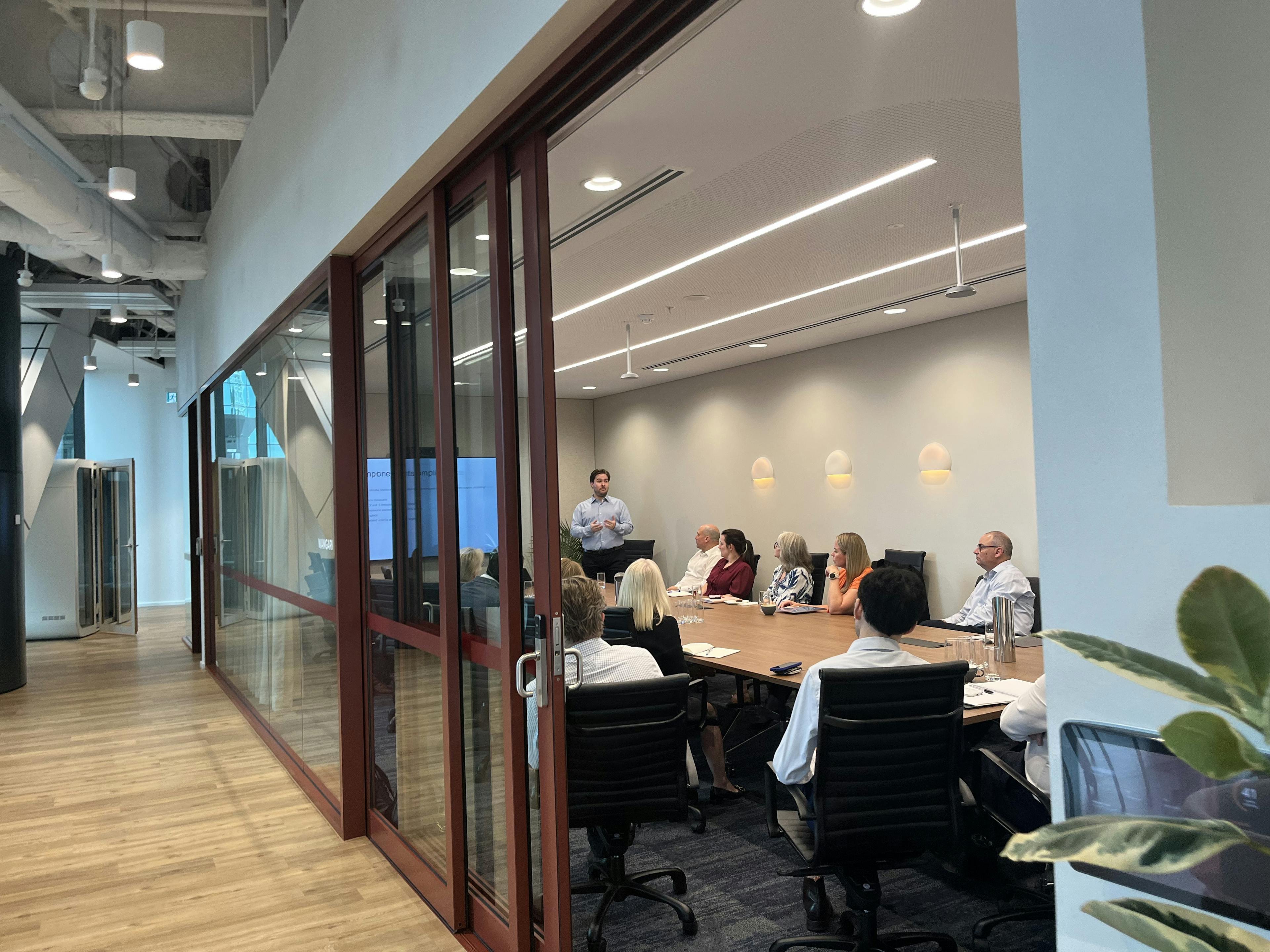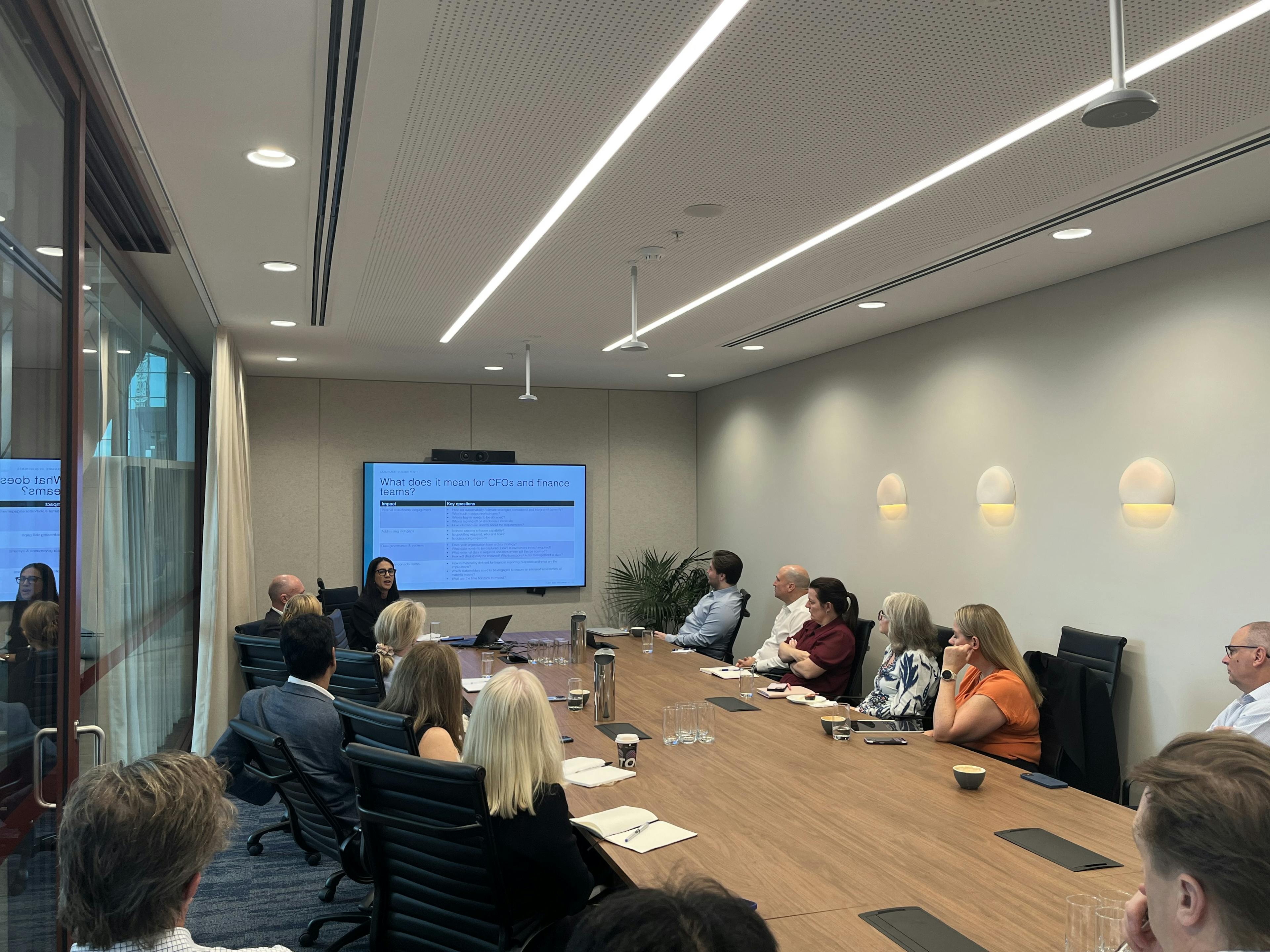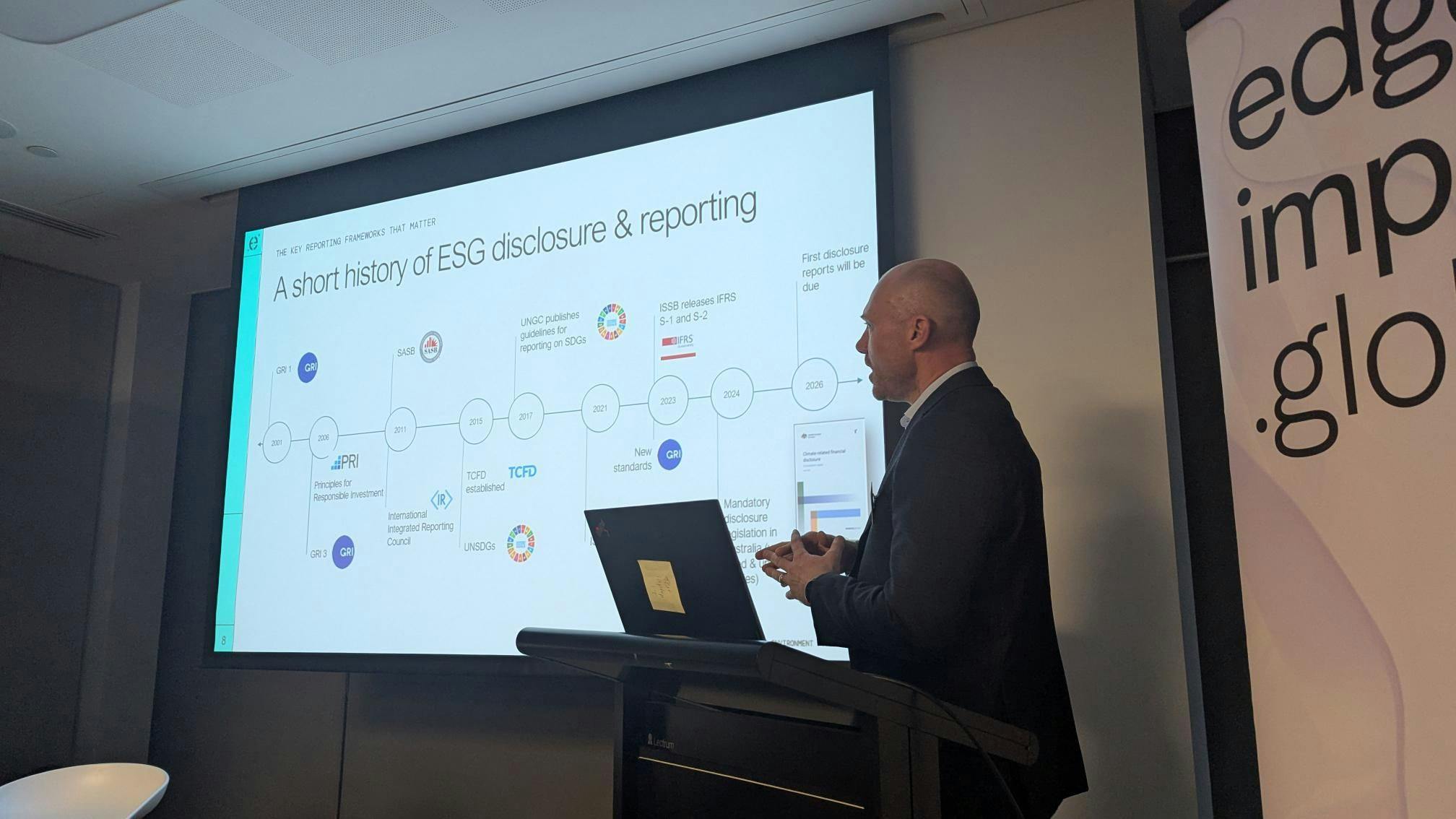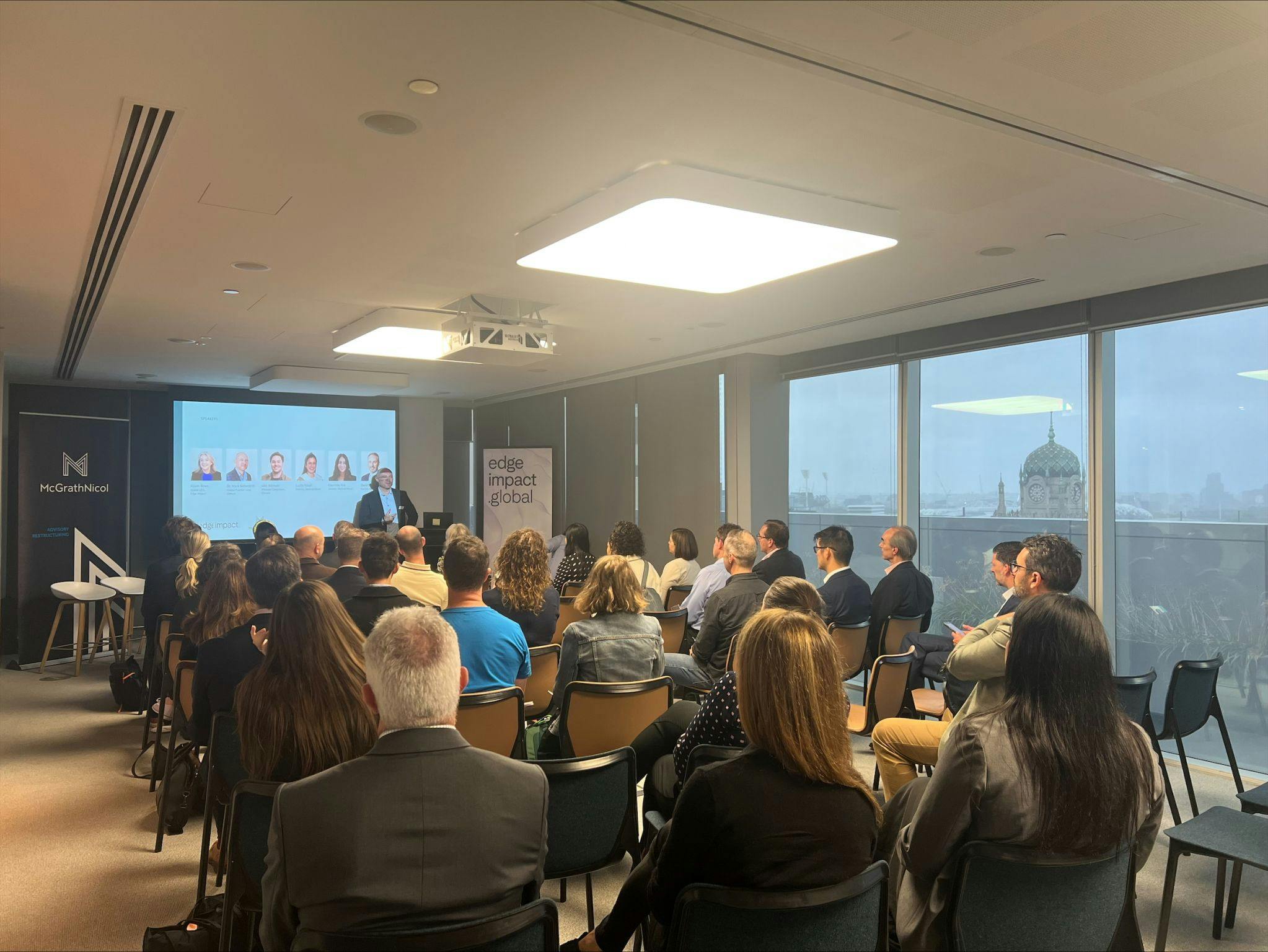
Inside the Climate Disclosure Conversation: What we’re hearing across Australia
Co-authored by
Mark Siebentritt, Global Climate Practice Lead at Edge Impact and Courtney Roe, Director at McGrathNicol
Over the past few months, we’ve had the opportunity to connect with sustainability and finance professionals through a series of climate disclosure engagement sessions delivered in partnership with McGrathNicol.
Held across Sydney, Melbourne and Brisbane, these discussions were shaped by Australia’s incoming mandatory reporting requirements, but the questions we heard went far deeper than regulation.
What emerged was a clear picture of where organisations are finding traction, where uncertainty still lingers, and what’s needed to move forward with confidence.
Below are four insights we’re taking with us, drawn directly from the conversations happening in boardrooms and reporting teams across the country.
1. Confidence at the top starts with clarity on the ground
As directors prepare to sign off on climate disclosures under AASB S2, they’re seeking something beyond compliance: confidence.
That confidence, we heard time and again, rests on solid data but also on a shared understanding of what climate risk really means for the business. Especially for companies with material Scope 3 emissions, the conversation often turned to how reliable their current data is, and when it’s appropriate to rely on spend-based estimates versus more detailed inputs.
These are not just technical decisions; they’re strategic ones. The more clarity there is at the operational level, the easier it becomes to build assurance further up the chain.
“Meeting the requirements of AASB S2 will require input and engagement from different internal stakeholders including finance, risk, sustainability and executive teams.
Defining roles and responsibilities early in the journey, putting assurance in relation to the ASRS on the Board’s agenda, and obtaining buy in from the executive team will ensure a smoother process to compliance.”
Courtney Roe, Director, Deals at McGrathNicol

2. Group 3 entities may not be reporting yet - but they’re already in the spotlight
While Group 3 entities are not yet required to report, many are already being asked for data, particularly by Group 1 clients who are pushing disclosure expectations down their supply chains. This pressure is felt not only by Group 3 entities, but also by SMEs below the reporting threshold.
Some Group 3 organisations are responding proactively: collecting Scope 1 and 2 data (such as fuel and electricity use), exploring reporting frameworks, and building internal capability to prepare for future requirements.
Others are feeling caught off guard by the pace of change, especially when disclosure requests arrive through procurement channels with little context or support.
What is clear is that, whether reporting is mandatory or not, expectations are shifting and early action is becoming a strategic advantage.
"Group 2 and 3 entities in the supply chain for Group 1 entities should prioritise preparing for mandatory climate reporting now. Early action isn’t just about compliance, it’s becoming essential to remain a preferred provider of goods and services."
Mark Siebentritt, Global Climate Practice Lead

3. Scenario analysis: the right place to start
Scenario analysis is one of the more complex aspects of climate reporting, and it sparked many questions during our sessions.
The standards require at least two scenarios. One aligned to 1.5°C and another to higher warming, but many wondered how much detail is really needed. When is qualitative analysis enough, and when is detailed quantification necessary?
We advise that starting with a qualitative approach to identify key risks and assess their impact on revenue, costs, cash flows and assets is often the most practical first step. This helps organisations prioritise and build understanding before moving into more detailed modelling.
Viewing scenario analysis as an evolving process allows organisations to manage climate risks thoughtfully without getting overwhelmed by complexity upfront.
“Across all three sessions, we heard similar questions about AASB S2, particularly around its relevance for customers and supplier data. It was great to see the conversations shift beyond compliance, with many focusing on the strategic benefits and practical steps for implementation.”
Jake Atkinson, Principal Consultant, Climate

4. How much do we need to disclose?
A common theme in our sessions was the question of disclosure scope. Many participants drew parallels with financial reporting where public disclosures offer just the “tip of the iceberg” above a much larger body of internal analysis.
Organisations are still grappling with what qualifies as ‘material’ and how much of the underlying work should be shared publicly.
The challenge is striking the right balance between transparency and clarity, ensuring disclosures are meaningful without overwhelming stakeholders.
“The purpose of the disclosures must be front of mind when determining the extent of information and supporting analysis to disclose.
What is relevant and important to your investors and stakeholders? Could omitting certain information potentially influence the decision-making of users of the financial statements?”
Lucille Nicoll, Director, Deals at McGrathNicol

Looking Ahead: Navigating Complexity with Confidence
While many organisations face similar questions around climate disclosure, the real challenge lies in translating evolving standards into practical, trusted processes that drive strategic outcomes.
At Edge Impact, our deep experience working alongside finance and sustainability leaders across Australia means we don’t just talk theory, we guide clients through the complexities of data confidence, scenario analysis, and materiality with pragmatic solutions tailored to their context.
As the regulatory environment tightens, those who partner with experts and take early, informed action will find themselves not just meeting requirements, but shaping more resilient and future-ready businesses.
Further Reading:
For more on the intersection of finance and climate reporting, check out our earlier article co-authored with McGrathNicol on the expanding role of CFOs in climate disclosure reporting.
For further information on the Australian Sustainability Reporting Standards and the implications for CFOs contact Mark Siebentritt, Global Climate Practice Lead at Edge Impact or Courtney Roe, Director at McGrathNicol.
RELATED ARTICLES





